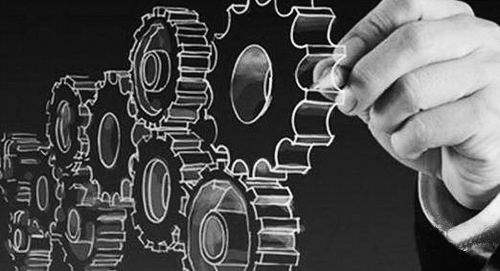At present, the two main systems of the Industrial Internet of Things are Germany's Industry 4.0 and the United States' Industrial Internet.
The goals pursued by the two are highly consistent, that is, to aggregate capabilities through the networking of industrial systems, and then use them flexibly to serve individual and creative needs, and generate new business models and ecology.
However, unlike Industry 4.0, which focuses more on supply chain (value chain) research, the Industrial Internet is more inclined to research on information systems and stakeholders (roles).
The "role" not only refers to the enterprises and organizations up and down the industrial chain, but also includes all kinds of professionals in the enterprise (business decision makers, technical engineers, product managers, etc.).
Starting from the demand for "role", the Industrial Internet proposes a four-layer "Viewpoint" structure (also called "component").

In the construction of the Industrial Internet, the business perspective focuses on identifying the business vision, values, and goals of stakeholders. Relevant personnel (including industry users) need to think about how to achieve business goals through the basic functions provided by the Industrial Internet. (Industry users: business decision makers, product managers, system engineers, etc.)
2. Application Viewpoint (Usage Viewpoint)The application perspective is positioned on reliable and complex system applications (functions). Through a series of self-service operations (use process) of professional users or logical users, the basic functions or services of the system can be obtained and assembled into mature commercial applications. (Professional users: system engineers, product managers, etc.; logical users: smart terminals)
3. Functional ViewpointThe functional perspective focuses on the basic functional modules (system components) in the industrial Internet system to support the operation of upper-level application components. The functional perspective mainly studies the relationship between the modules, the combination structure, the information interaction interface, the use process and steps, and the relationship between the function modules and the external environment of the system. (System and component architects, developers, integrators)
4. Implementation perspective (ImplementaTIon viewpoint)The executive perspective mainly focuses on the information technology elements in the functional perspective, including specific industrial control systems, communication schemes and software programs.
The executive component (perspective) focuses on the most basic and core technical architecture of the Industrial Internet of Things. The function (perspective) is built on the technical architecture of the executive perspective, so that multiple applications (perspectives) can work together and achieve the complete delivery of the business. (System and component architects, developers and integrators, and system operators.)
The executive and functional perspectives are the technical foundation of the Industrial Internet. "Executive perspective" is mainly to build a standardized information channel, so that independent equipment and systems form a digital map in the "functional perspective", which can be accessed and operated by other information systems.
The business and application perspective is to look at production activities from a business perspective, which is concerned with funds, customer relationships, supply chains, human resources, corporate assets, product life cycles, and so on.
The systems and capabilities in the four perspectives are intertwined to form a complete system architecture of the Industrial Internet.
Product Description
The combined pad mounted transformer places the transformer body, high-voltage load switch, fuse and other components in the transformer oil tank together. Because of being immersed in oil, the component volume is greatly reduced, the structure is more compact, and the installation is convenient and flexible. Fully insulated, fully sealed structure, safe and reliable, easy to operate, maintenance free. It is widely used in residential areas, high industry centers, factories and mining enterprises, airports, stations, schools and other places.
Characteristics of pad mounted transformer
1. Compact structure, small volume, convenient and flexible installation;
2 Fully insulated and sealed structure, safe and reliable, maintenance free, and reliable protection of personal safety;
3 The high-voltage side is protected by double fuses, in which the plug-in fuse is a double sensitive fuse (temperature and current) and the backup fuse is a current limiting fuse, reducing the operating cost;
4 High voltage incoming line adopts cable connector structure, which is fully insulated, safe and reliable, and easy to operate;
5 It can be used for both ring network and terminal. It is very convenient for conversion and improves the reliability of power supply
6 The transformer is a three-phase three column structure, and the iron core adopts the stepped joint process, which has low noise, low loss, and strong short-circuit and overload resistance.
7 The box can adopt anti-corrosion design and special painting treatment according to the requirements of the operating environment. It has the "three prevention" functions, namely, anti condensation, anti salt fog, and anti mold functions, and can meet the anti-corrosion requirements under high temperature and high humidity environments.
Pad Mounted Transformer,combined pad mounted transformer,prefabricated substation,Complete box type transformer,Box type substation
Henan New Electric Power Co.,Ltd. , https://www.newelectricpower.com